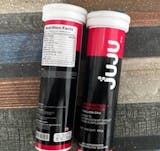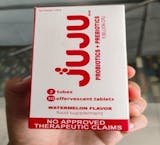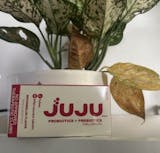The skin is the largest organ in our body. It’s true that your skin tone is determined by your genes, and that different ethnic groups have different physical features. Some people are born with naturally darker skin, while others have lighter skin.
Many people are curious about the methods of lightening their skin but don’t know where to begin. It’s doable, but only if you put in the time and effort. There is a simple approach that is both safe and healthy. A growing number of people today are taking extreme measures to achieve their ideal of having white skin.
Whitening solutions have seen significant success in a number of international markets. Such products have been popular for a very long time. As a result of the common perception that lighter skin is more attractive, a thriving market for cosmetic goods has emerged. For that reason, we’ve put up this guide to learn more about skin whitening and discover your options for achieving it for yourself.
IN THIS ARTICLE
05. Conclusion
The Social and Cultural History of White Skin
The Asian craze for white skin has been in the news constantly in recent years.
These discussions on ideal skin tones and appearance are founded in long-held cultural norms. Dark complexion has historically been associated with laborers in the fields and, by extension, rural poverty in many cultures, particularly in Asia. In contrast, having fair skin is a sign that you like to stay out of the sun and in the warmth of your home, where you may enjoy a more sophisticated and worldly lifestyle.
A person’s socioeconomic status can be inferred from their skin color. In Asian societies, “whiteness,” or having white skin, is a key component in defining feminine attractiveness. The demand for skin-lightening and whitening products in Asia has skyrocketed in recent years. Western ideas and traditional Asian values and beliefs both contribute to modern conceptions of what it means to be white.
How did skin lightening spread and become popular in countries like Africa and Asia? Slavery and colonialism are the short answers. According to a report published by the American Sociological Society: “To legitimize racial slavery, slave-holding interests propagated a white supremacist ideology which maintained that persons of African descent were fundamentally inferior to whites. Over time, being white became synonymous with “civilised,” “virtuous,” and “beautiful.”
Slaves with lighter skin tones were kept out of the hot sun by being assigned indoor tasks, while those with darker skin tones were kept outside. Lighter complexion put you in areas close to the advantages enjoyed only by whites, including greater access to education, work, and social and marriage options.
Long periods of colonisation by European powers like the Portuguese, French, Dutch, and British had a comparable impact on India. In spite of India’s freedom from the British in 1947, lighter skin is still a sign of better social status there. A study published in 2018 on the topic of the role of skin colour in arranged marriage links this phenomenon back to white domination, which “led to internalisation of superiority and power of the ‘white’ skin and inferiority and helplessness of the ‘black skin.
And us being a Filipino with “kayumanggi” or “moreno” skin is not excluded in this kind of discrimination. In 2018, Catriona Gray became the fourth Filipina to be named Miss Universe, but the country was deeply divided over her success. Many people have commented on the internet that she looks like a tanned Caucasian and that is why she won. Gray is a mixed-race Australian, with ancestry from both Scotland and the Philippines. Many others felt she was “not Filipino enough,” despite being of Filipino descent. She’s gorgeous by Western standards,” one woman tweeted.
As a result of cultural norms that define physical beauty, the pursuit of fair skin has become so deeply established in some Asian societies that it has created its own industry of cosmetics. On the other hand, there are items available for purchase that are designed with the specific purpose of helping those with darker skin tones in their attempt to achieve a more attractive skin tone.
METHODS ON HOW TO GET WHITE SKIN
As far as skin tone goes, women have their own preferences. White, healthy-looking skin is desired by some, while lighter, more soft and smooth skin is desired by others.
So, how exactly can you get the snow-white complexion of your dreams?
1. Be sure to exfoliate your skin on a regular basis.
It takes around four weeks for the epidermis’ top layer of keratinocytes to be replaced. Simply said, if you don’t exfoliate your skin or remove dead skin regularly, those dead cells are likely laying on top of your skin right now. It’s not just making your skin look dull; it’s also slowing down the process by which your skin tone and blemishes improve.
Since melanin is expressed in the keratinocytes, using physical and chemical exfoliants as part of your skincare routine will help to lighten your skin at a faster rate. The mechanical action of physical exfoliants is directed towards the skin’s surface, making them ideal for treating only superficial discoloration.
Beta hydroxy acids (BHAs), the active element in many skin-lightening chemical peels, can reach deeper layers of the dermis. As a result, it is particularly well-suited for dealing with unsightly marks that refuse to go away. Since chemical exfoliants don’t rely on abrasive motions, they’re also suitable for people with sensitive skin.
2. Vitamin C
Clear skin is a goal for every woman. Fear of the possible harmful side effects of chemical treatments can be a hurdle, though. Ascorbic acid, or vitamin C, can be used to lighten skin without the use of harmful chemicals. Taken orally or applied topically, it aids in the skin’s natural ability to retain its firmness and elasticity. As a result of its ability to aid in skin restoration, your complexion will improve and you’ll seem more radiant than ever.
3. Consume Foods High in Antioxidants
The increased generation of melanin is a good reason to up your intake of antioxidant-rich foods; free radicals cause this increase. This is due to the fact that antioxidants destroy free radicals by giving them an electron, rendering them harmless. This reduces the potential for melanogenesis by neutralizing free radicals.
Antioxidants can be obtained either internally (via the consumption of antioxidant-rich fruits and vegetables) or extrinsically (through oral supplements). Vitamin E, beta-carotene, vitamin C, and selenium are the key antioxidants that should be included in your diet.
Look for these rich in vitamin foods when making your grocery list:
- Blueberries, strawberries, and other berry fruit
- Lemons, limes, oranges, and other citrous fruits.
- Vegetables with dark green leaves, like kale and spinach
4. Try Out Some Organic Methods
Homemade natural (methods) never get old because of their soothing, safe, and sure results when compared to the cosmetic options available.
The use of natural products such as:
- Lemon
- Honey
- Orange Peels
- Aloe Vera
- Cucumber
- Papaya
- Potatoes
These fruits and vegetables are helpful whether consumed either in liquid form or by eating. Some can even be put into the skin as part of your skin care routine to lighten your skin tone.
5. Use of Whitening Products
The use of whitening creams, which are both cheap and effective, is likely to produce the desired outcomes if used regularly. You should use caution when shopping for skin-lightening lotions. You should stay away from hydroquinone and mercury-based lotions because they can cause long-term damage to your skin in the form of dryness, dull skin, premature ageing, and wrinkles.
Whitening serums are another option that may help you achieve your desired outcomes. Some dermatologists claim that serums are more absorbed directly by the skin than other types of skin care treatments.
You could also want to look at alternatives that include retinol, vitamin C, or niacinamide. New, healthy skin cells are generated, collagen production is boosted, and active compounds is increased thanks to these substances, leaving you with smoother, younger-looking skin with fewer wrinkles.
6. Supplements for Oral Use
There are a variety of options for skin lightening, including topical creams and lotions as well as dietary supplements.
Glutathione supplements are among the most well-known. The antioxidant glutathione is often praised for its ability to lighten skin. The human body produces glutathione on its own. As an antioxidant, it consists of the amino acids glycine, glutamic acid, and cysteine acid. It aids in the whitening of the skin by repairing damaged cells, and it aids in many other biological functions as well.
Therefore, taking Glutathione in pill form or using Glutathione-containing products or glutathione injections, can limit melanin synthesis by attaching to the enzyme and blocking its action. The enzyme tyrosinase is found in melanocytes, which are the specialized cells responsible for producing the pigment melanin, which is what gives our skin its color.
In addition, collagen is gaining popularity as a means to healthy, natural glowing and radiant skin. Fish collagen and elastin are contained in effervescent tablets like Juju Collagen with Vitamin C, which aid in the achievement of smoother, softer, firmer skin. Moreover, it contains Vitamins C and E, which work together to repair skin damage and shield it from UV rays.
7. Chemical peels
Chemical peels, in which doctors scrape the skin using peeling solutions like alpha hydroxy acid, are a popular method of skin lightening. Chemical peels effectively heal face imperfections, uneven skin pigmentation, and wrinkles, revealing smoother, brighter skin.
8. Lifestyle and Food Intake
Using a serum or lotion can be beneficial, but the best method is to adopt a healthy diet and way of life. What you eat and how well your skin is taken care of can be seen in your skin. It’s important to take care of yourself from the inside out, because the state of your skin is a reflection of what you consume. The greatest way to keep our bodies running smoothly is to feed them well-balanced meals full of essential nutrients.
The health of your skin can be considerably improved by adopting a healthy lifestyle. Even if you use the best items on the market, you won’t see results unless you also commit to a healthy lifestyle.
Other Factors That Can Affect Skin Tone
Natural Skin Color
When it comes to your skin, one of the most important elements is your natural skin tone. A higher melanin level in the skin shields it from the sun’s harmful rays and gives people with darker skin tones the ability to tan. This explains why persons with darker skin tones tend to darken or tan after long periods of sun exposure.
Age
Everybody gets older. The effects of ageing on the skin can be devastating if you aren’t prepared. Changes to your skin throughout time:
- reduces in thickness, resulting in an increase in the visibility of veins and holes.
- regenerative and rejuvenative processes are slower
- loses moisture quickly and becomes dry and brittle as a result
- becoming wrinkly and sagging
- collagen production decreases, resulting in less elasticity
The outlook may not be very bright, and we can’t provide any pleasant surprises at this time. However, you can slow down the effects of ageing by sticking to an effective skincare routine.
Ethnicity
This one’s relatively less spoken about, although incredibly interesting. Your ethnic origins influence the structure and appearance of your skin and how your skin reacts to the sun, generating varied amounts of UV damage.
It has been established that darker skin (think those of Hispanic, African descent) includes more melanin – the pigment that gives skin its natural skin tone. This functions as both a blessing and a curse — on one one, the skin is more protected from UV rays, thereby postponing indications of ageing. On the contrary, pigmentation problems become more profound.
Sun light
Most of the uneven skin disorders such as age spots, melasma, and PIH can be worsened or induced by prolonged UV exposure. UV light generates free radicals, which drives melanin formation to protect the skin from these dangerous rays.
This is why prolonged exposure to UV rays is so problematic: Increased sun exposure boosts melanin levels in the skin, which generates darker skin. Existing hyperpigmentation may get darker while new age spots, freckles, or melasma flare-ups may emerge. Applying sunscreen should be included in your daily routine not just only when going to the beach.
Stress
Acne and other skin disorders can be triggered by stress that goes unchecked. Managing stress involves taking steps like lowering workload, prioritizing leisure time, and learning relaxation techniques. The body always reacts in some way when stress takes hold. Unfortunately, skin is not an exception. Changes in hormone levels, brought on by stress, are a major contributor to acne. Excessive sweating, drinking beverages that dehydrate the body (such coffee and alcohol), not getting enough sleep, and not caring for one’s skin can all make matters worse.
Sleeping Habits
The value of enough sleep has long been touted by skincare professionals. That’s why we’re repeating it again: beauty sleep exists. In the midst of your beauty sleep, your skin is busily performing vital functions. Damaged skin cells are repaired and renewed by growth hormones, and moisture and collagen are replenished.
Frequently Asked Questions
How can I fix my skin color?
The number one rule is to always take care to clean your skin thoroughly. You should stay hydrated, maintain a healthy digestive system, and prevent constipation by drinking plenty of water.
Why is the face usually darker than the body?
Compared to the rest of our bodies, our facial skin produces more melanin, making it darker than the rest of our bodies. Sunlight’s UV rays can break down melanin cells, and since the face is so often in the sun, it’s the first place to show signs of damage.
What causes darkening skin?
Excessive melanin production is associated with a darkening of the skin. Darkening of the skin can occur during pregnancy, Addison’s illness, or after prolonged sun exposure. Too little melanin production causes skin lightening. Skin can become abnormally white in spots due to a disorder called vitiligo.
Which vitamin is good for skin whitening?
Vitamins can help fade dark spots and brighten your skin tone. Vitamin C, vitamin B12, and vitamin E are three of the greatest vitamins for fading age spots. Vitamin C boosts collagen production and suppresses melanin production, two key skin concerns.
Conclusion
There you have it, a quick and easy guide to achieving white skin. Using harsh cosmetics that remove your skin’s natural oils is unnecessary. Lightening and brightening your skin can be accomplished in various ways.
However, the most important thing to remember is that your skin tone is not who you are. You can be beautiful regardless of your skin tone. Do not be scared to be yourself; no matter your skin tone, you are stunning. Perhaps one day we can all accept each other for who we are, despite our differences.










